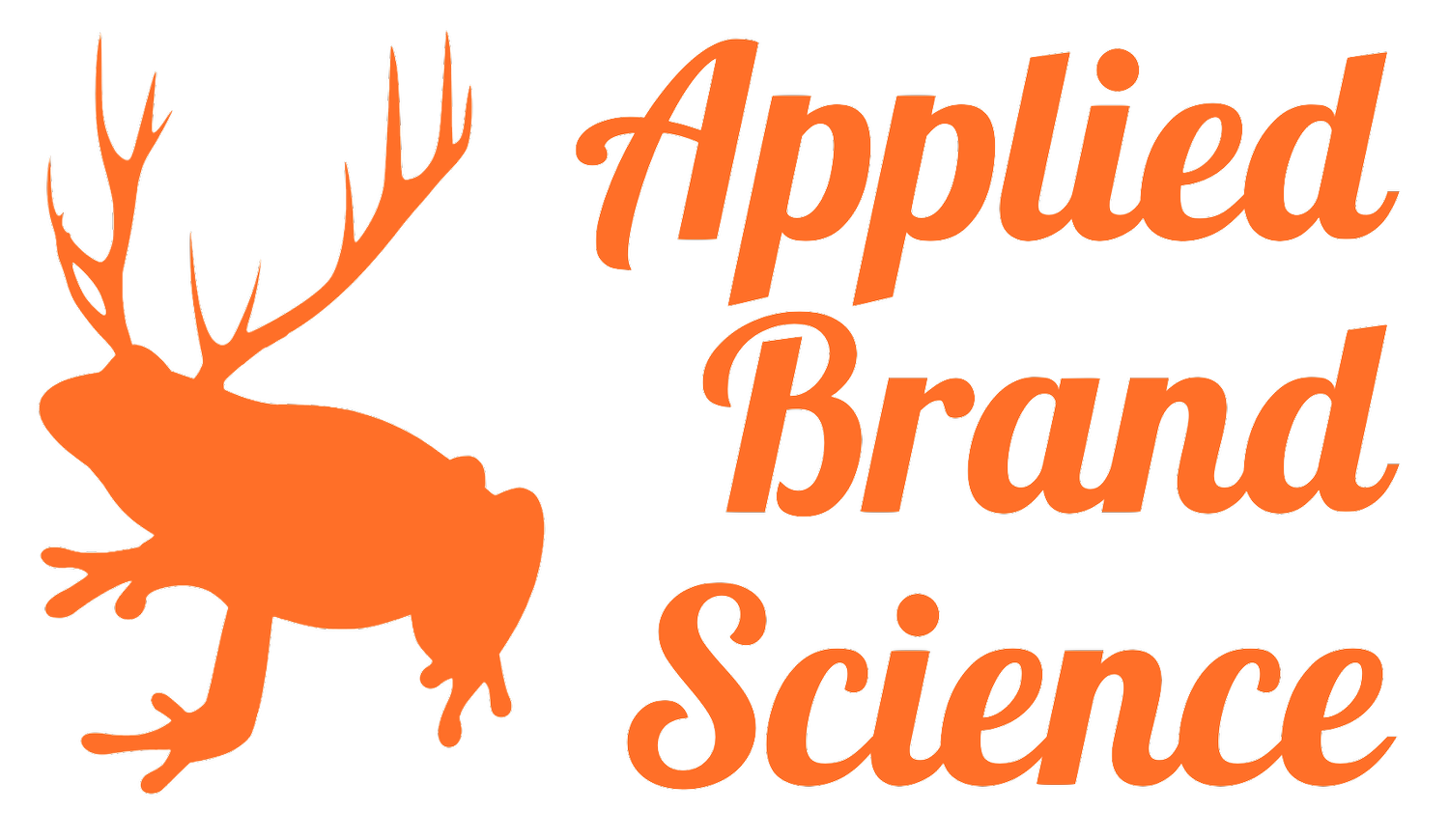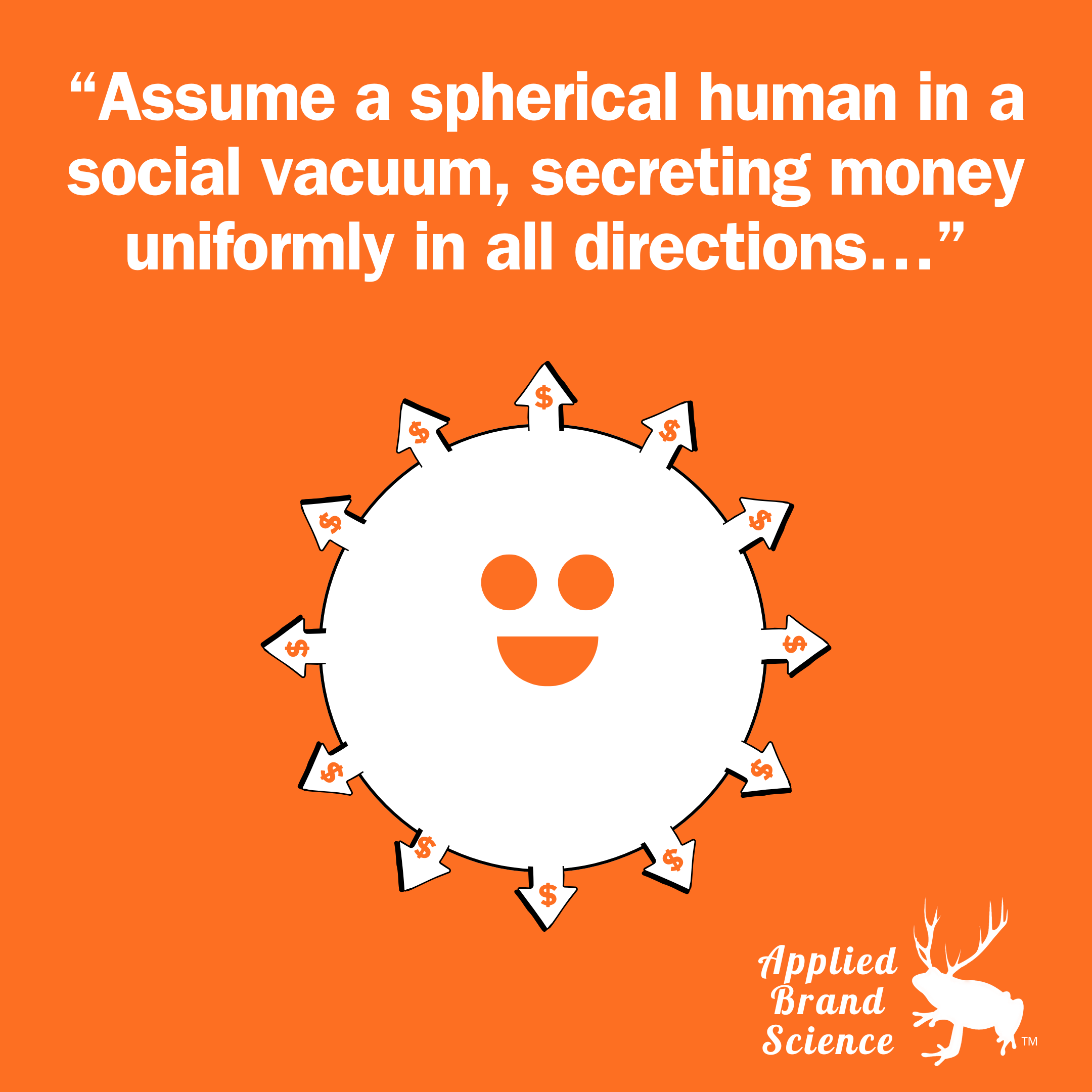Why is it useful to think about a “spherical shopper”?
Ok, so you might know about this mathematical, academic model of shoppers & brands & categories called the NBD-Dirchlet. You might’ve read about it in How Brands Grow by Byron Sharp. And if you’ve read the original paper from 1984, you _might_ know it makes all these crazy, wild assumptions about shoppers & brands & whatnot.
F’rinstance, it assumes people’s brand preferences don’t change. And that what brand you buy last time doesn’t influence what brand you buy this time. And that there are no subcategories. And — get this — that brands’ market shares don’t change. LIke, at all.
These sound insane. We know preferences change, that Tito’s booms, and Red Lobster boils. Is this theory just naïve & useless?
One way I like to think about the NBD-Dirichlet is like the SPHERICAL COW.
Let me explain. See, when trying to come up with big-T “Theories” in science, it’s useful to simplify. A LOT.
F’rinstance, when Newton figured out his famous laws of motion, he assumed things are in a vacuum with no air. And there’s zero friction between things. And the mass of any object is all at a point in its middle. Etc etc. This seriously helped with working out the laws.
“Simplifying assumptions” like these have become the basis of a joke. It goes like this:
A farmer is having trouble with her dairy cow: it isn’t producing milk like it used to. So she tells her neighbor, who happens to be a physicist. He offers to help. After doing some measurements & some math, he shares his findings.
“Ok,” he says, “Consider a spherical cow in a vacuum, secreting milk uniformly in all directions….”
Ha ha. But here’s the kicker: even with all these crazy assumptions, Newton’s laws work amaaazingly well, for everything from planets to peanuts. And when they don’t work, it means something else is going on — that some assumptions are being violated.
So when you drop a feather and a fish, you don’t say Newton’s laws are wrong because the feather floats and the fish flattens (his laws say they both fall at the same rate). No: you realize that something else, namely air resistance, is at play.
The same is true with the NBD-Dirichlet. It basically assumes a “spherical shopper” in a social vacuum, extruding money uniformly to all brands in its repertoire (so to speak ha ha). AND YET, it still does an amazing job of predicting all kinds of things about shoppers, brands, and markets.
And then when you see a Tito’s, it doesn’t mean the model’s broken: it means something else is going on. Maybe changing preferences. Or product differences. Or retailer dynamics. All kinds of stuff.
Some lessons:
🔸Understand a theory’s assumptions.
🔸Look at what it’s good at describing, explaining, & predicting.
🔸When the data doesn’t fit the model, see if any assumptions are being broken. Look for something else at play.
🔸Don’t live in a vacuum.


